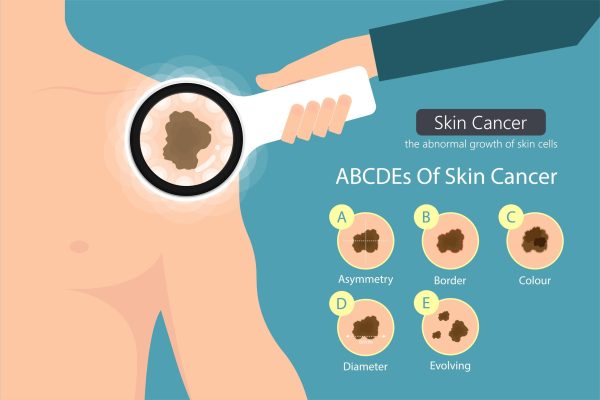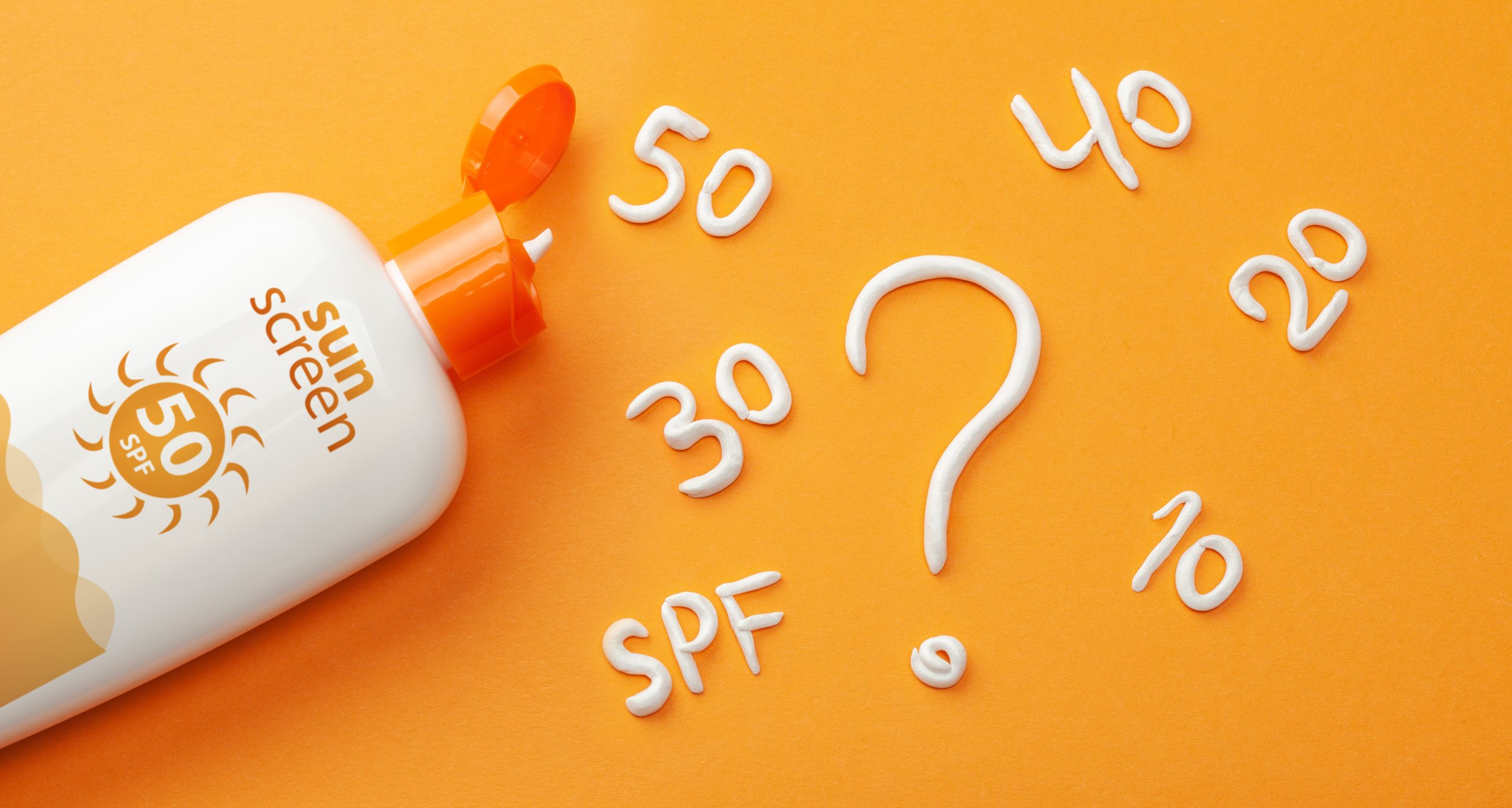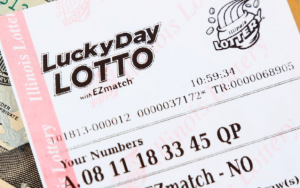Skin cancer is the uncontrolled growth of abnormal skin cells. It occurs when DNA damage to skin cells (often caused by ultraviolet radiation from the sun or tanning beds) triggers mutations. This leads the skin cells to multiply rapidly and form malignant tumours. Understanding the different types of skin cancer and recognising their signs is crucial for early detection and effective treatment.

Asymmetry: One half of the mole or spot does not match the other.
Border: Edges are irregular, ragged, notched, or blurred.
Colour: Varied shades of brown, tan, or black, sometimes red, white, or blue.
Diameter: Larger than 6mm (about the size of a pencil eraser).
Evolving: Changes in size, shape, colour, or texture, or new symptoms such as bleeding or itching.
Sun Protection Factor (SPF)
SPF indicates the level of protection a sunscreen offers against UVB rays, which are the main cause of sunburn and contribute to skin cancer. The number represents how much longer it will take for UVB rays to redden the skin with sunscreen compared to without.
SPF 15: Blocks approximately 93% of UVB rays.
SPF 30: Blocks approximately 97% of UVB rays.
SPF 50: Blocks approximately 98% of UVB rays.
Usage Tips:
Apply generously 15 minutes before sun exposure.
Reapply every 2 hours, or after swimming or sweating.
Use broad-spectrum sunscreen to protect against both UVA and UVB rays.
Sun Smart: Slip, Slop, Slap, Seek, Slide

The SunSmart campaign promotes five key actions to protect against skin cancer:
Slip on a shirt: Wear protective clothing to cover as much skin as possible.
Slop on sunscreen: Use SPF 30 or higher, broad-spectrum, and water-resistant sunscreen. SPF 30 sunscreen blocks 96% of UV rays, but SPF 50+ sunscreen blocks 98% of UV rays.
Slap on a hat: Wear a wide-brimmed hat to protect your face, head, neck, and ears.
Seek shade: Find shade, especially during the peak UV radiation hours between 10 a.m. and 4 p.m.
Slide on sunglasses: Wear sunglasses that meet Australian standards to protect your eyes. Go for polarised sunglasses that are rated Category 3 or 4 for the best protection.
If we told you that you had a 98% chance of winning the lottery, would you buy a ticket?
Understanding the different types of skin cancer, the importance of SPF, and the SunSmart guidelines can significantly reduce your risk of skin cancer. Regular skin checks and adopting sun safety measures are essential steps in maintaining healthy skin. For more information or to schedule a skin check, contact the WA Skin Cancer Centre today.
